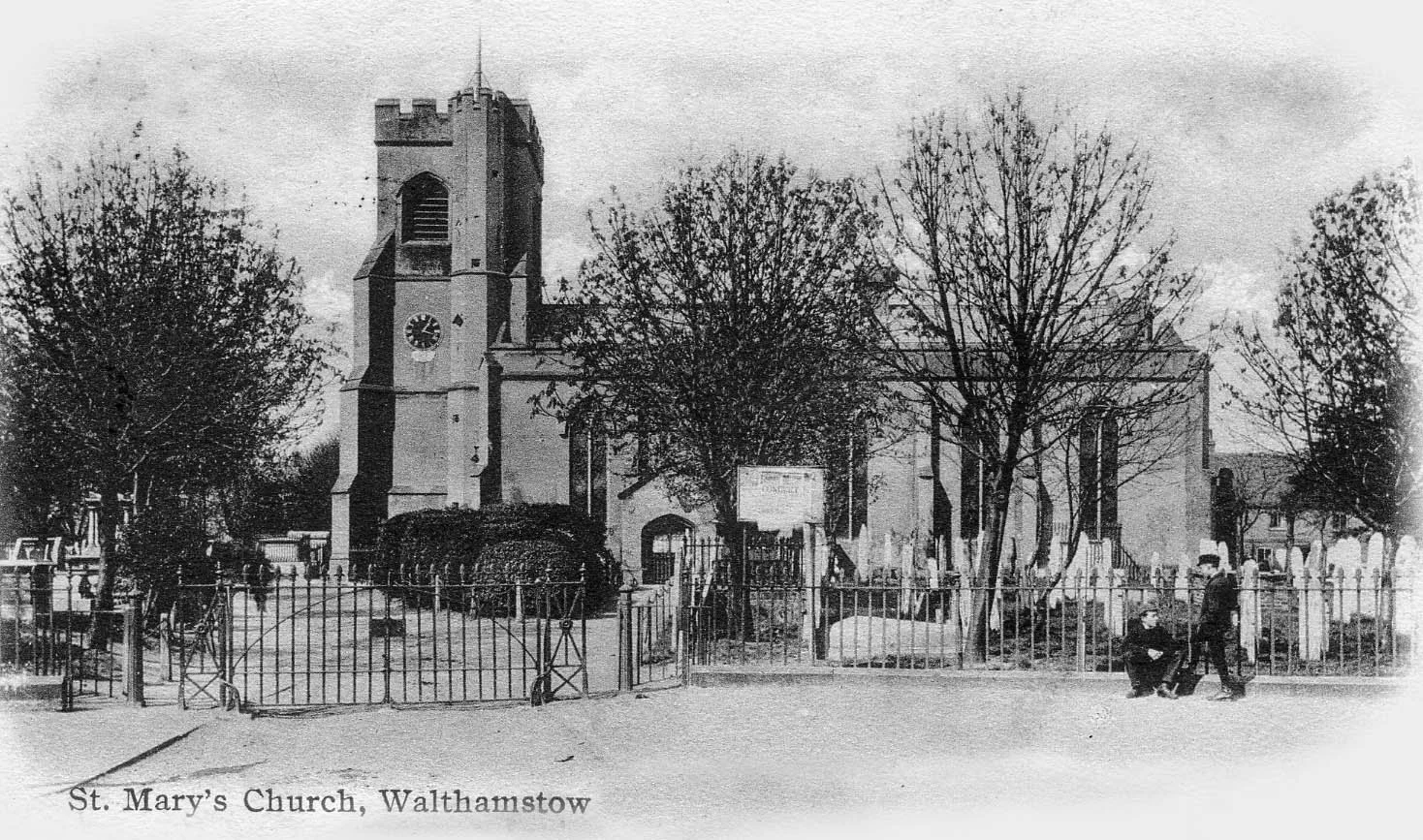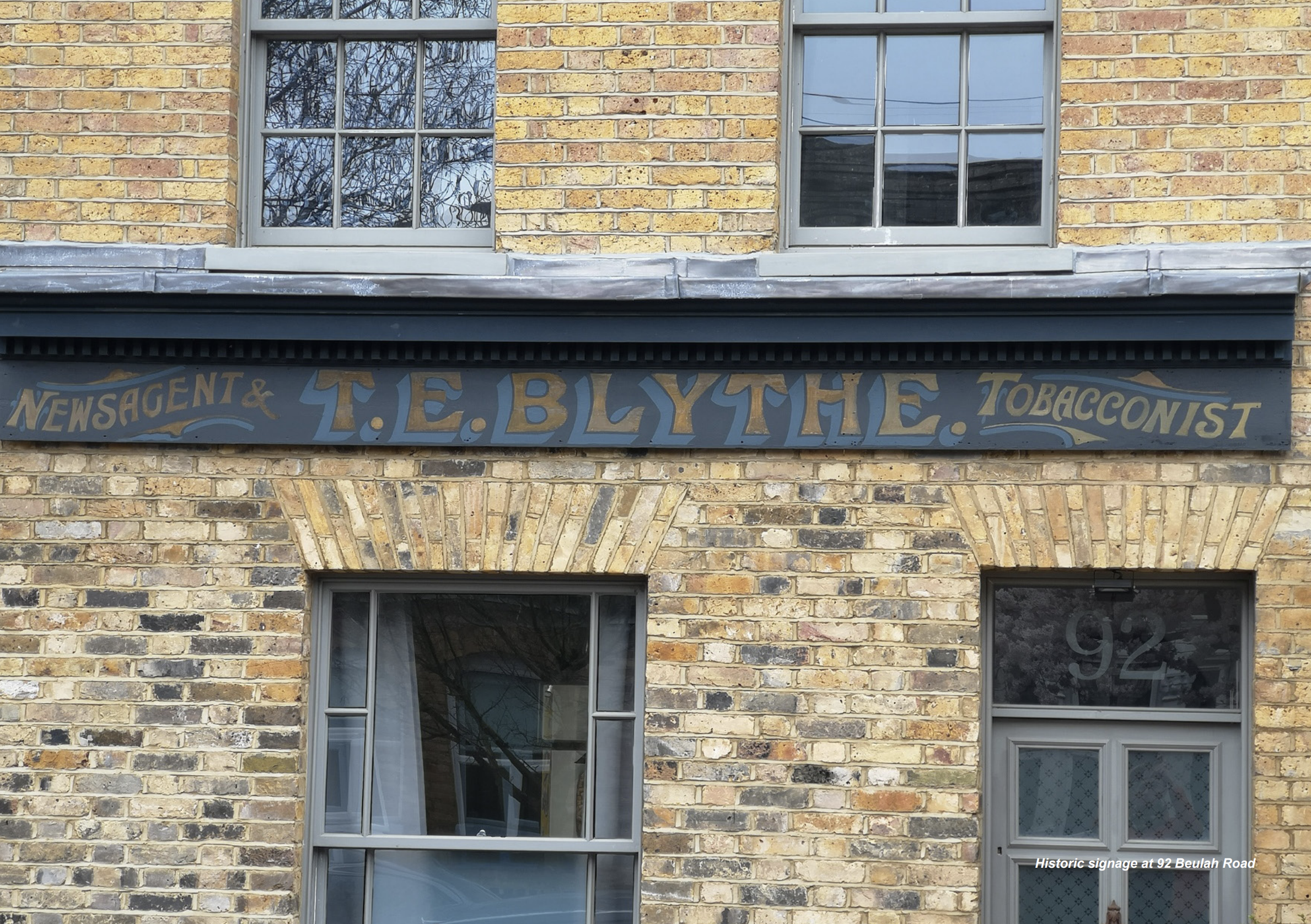
Interested in local history? You might like to know about the Walthamstow Historical Society
The Walthamstow Historical Society puts on regular talks with knowledgeable speakers; as well organising local walking tours, highlighting people and places of historical interest.

Waltham Forest Local Heritage List
See which local buildings you recognise - and discover some that you may have missed!
Conservation Areas
There are 2 conservation areas in Walthamstow Village:
Walthamstow Village conservation area was designated by Waltham Forest Council in December 1967 (this was the first area so designated in the Borough).
Download the council’s Walthamstow Village conservation area leaflet.
Orford Road conservation area was designated in 1990.
Download the council’s Orford Road conservation area leaflet.
History of Walthamstow Village
The Domesday Book records that Walthamstow at the time of the Norman Conquest was composed of four separate village settlements, in forest clearings connected by tracks. The parish at the time was called Wilcumestou’, probably Old English for ‘the welcome place’, and comprised two manors. The larger of the two was held by Waltheof the Saxon Earl of Huntingdon, who married King William’s niece Judith in 1070. Waltheof was executed in 1076 for plotting against the King, and through the marriage of his daughter Alice and Ralph de Toni in 1103 the manor passed into the hands of the de Toni family, where it remained for the next two hundred years. Ralph became Lord of the Manor, renamed Walthamstow Toni, and is credited with founding the current church.
In existence by the 12th century, St.Mary’s Church raised the status of the Church End settlement, and today it is the only one of the original settlements still recognisable as a village nucleus. As the ‘centre’ of Walthamstow the Church End area prospered and grew. The Manor House of Walthamstow Toni was built on the edge of Berry Field where the Ancient House stands today. The Ancient House itself is a timber framed ‘hall’ house dating from the 15th century and was erected after the new manor house ‘Toni Hall’ was built in Shernhall Street. In 1730 Walthamstow Vestry (the Local Government of the time) erected a simple eight roomed house on a one acre site, formerly part of the Church Common, for use as a Workhouse and for Vestry meetings. The building was enlarged in 1756, 1779 and 1814 and has had a multitude of uses: Walthamstow police station, armoury, builders yard, private house and since 1931 a local museum.
The village inn (the original Nags Head) was established on the adjacent corner to the Ancient House sometime during the Tudor period, as were the Monoux Almshouses and school to the north of the church. George Monoux is an important figure in the history of Walthamstow and he was a great benefactor to the area. He was a wealthy city merchant of the Tudor period, a member and master of the Drapers Company, Lord Mayor of London 1514 and 1528, and MP for the City of London in 1523. He lived much of his life at ‘Moones’, his estate in what is now Billet Road, and was responsible for both the Almshouses and school that bears his name, a causeway and two early bridges over the Lea, and the major restoration and extension of St.Mary’s Church in which he is buried.
In the 18th and early 19th century Berry Field, part of which was the Church Common, was gradually being encroached upon, with the erection of the Workhouse (now Vestry House Museum) in 1730, the Squires Almshouses in 1795 and the National School in 1819. St.Mary’s Infants School was built in 1828 on the Vicars Glebe, the remainder of which is still recognisable today as the site of Walthamstow Girls School, a Grade II Listed neo-Georgian building of the early 20th century. In 1830, 10 Church Lane was built on land that had been part of the gardens of the Ancient House. It is a typical late Georgian house and was occupied until the early years of the 20th century by the Reed family of builders. The original Nags Head remained on the corner of Orford Road/Church End until the erection of the new pub in 1859, when both the Inn and the adjacent 18th century cottages were demolished and replaced by a grocers shop and four houses. The four houses survive today but the grocers shop was demolished in 1959.
The year 1850 saw the start of a dramatic transformation in Walthamstow as the Church Common south of Vestry House was first enclosed then split up for building purposes in 1853. The arrival of the Great Eastern railway in 1869/70 accelerated the already rapid urbanisation of the area as fields, commons and the grounds of the great houses were transformed into the terraced streets of Walthamstow that we know today. By the late 1870’s the Orford Road area with its new Town Hall, shops, school and later hospital and church hall had become the centre of town, and the old village was already a relic of the past. That the village survived this dramatic period of change largely unscathed is remarkable, and it is rightly regarded as the most important Conservation Area in the Borough.
The above text is from the LB Waltham Forests’ Walthamstow Village conservation area leaflet.
A History of the Beulah Road Shops
Strolling down Beulah Road today, it’s hard to believe that at the turn of the 20th century, there were more shops lining the road than there were on Orford Road at the same time.
In 1887, there were a total of 43 outlets located on Beulah Road and by 1907, the number had risen to 45 which included two dairies, four tobacconists /confectioners, two butchers, three drapers , two bakers, two grocers, a greengrocer, a fruiterer, a hairdresser, two builders, a chemist, an oilman, a fishmonger, a general store, a boot repairer /maker, a toy dealer, a jeweller, an upholsterer, a laundry, a plumber, a coachbuilder, a removals firm, a furniture director, a beer retailer, a stationer, a printer and a paperhanger. Add these to the 30 or so shops on Orford Road and you can imagine a thriving and busy retail hub, right on the doorstep!
I became interested in the history of the Beulah Road shops on my daily commute to and from the tube station, noticing how many redundant shop fronts there were and wondering what had lay behind them over the years. I first wrote an article for this newsletter in 2007 and thought it worth updating as the fortunes of the area continue to ebb and flow.
Bradford’s greengrocers was at no. 59 Beulah Rd
Tenby & Penny, glass merchants, at no. 38A is one of the oldest surviving outlets in the road and was a corn merchant in 1907 and prior to that had been part of a Ladies School next door at no. 38 run by Mrs. Mary Wood (Beulah Villa). Occasionally, the current resident at Beulah Villa displays the history of their house on a board in the front garden, a common-place custom in small German villages. Perhaps others might be encouraged to do the same?
Nos. 18 & 20, now Deep Clean Laundrette, was Westcotts (Sweet Clean) Laundry in 1957. In 1907, an upholsterer and a greengrocer separately occupied these properties.
Fullers the builders at no. 68 was founded by Edward Fuller in 1872. In the 1880s, Joseph Amey had a building business just down the road at no. 102 and between the two families, built many of the Victorian terraces in the locality. The painted Amey sign can still be seen at the top of no. 102.
No 6 was a confectioner’s from the early 1900s through to the 1950s (at one time called The Little Wonder). Interestingly, in 1957, Norman J. Chivers was the proprietor at no. 6 while next door at no. 4 Mrs. Hilda Chivers ran a ladies’ outfitters. I wonder what their relationship was?
In 1907, the Blythe family had a confectioner and newsagent’s at no. 92 and until relatively recently it remained a newsagent’s, lastly as Beulah Road News. It has now been sympathetically renovated into a residential residence with the splendid original shop sign T.E. Blythe back on display which was found during the restorations.
In 1887, George Thomas Tuckwell owned a butcher’s at no. 57 which was still in the same name in 1957. You can still see the shop name below the original window.
No 40, until not so long ago was J.C. Meadows Removal Contractors (still operating in Chingford). In the 1930s, I hear that their yard was occasionally used for housing the elephants when the circus came to town.
In 1957 there were 32 outlets; in 1977 there were still 27. By 1988 the number had dropped to 13 and now only a small handful still exist.
Fortunately, Orford Road is enjoying a revival these days with its mix of eateries and various outlets and there has been a stirring of activity of late on Beulah with occasional pop-up shops, a Saturday market and reopened shops. Not many photos seem to exist of the old Beulah Road shops but the few that I’ve found give a flavour of how it might have looked back in the day.
-Teresa Deacon




